I am Cider Curious #WorldWineTravel

World Wine Travel Writers Detour to Hard Cider
This month, our World Wine Travel writers are taking a short detour from Spain to explore ciders from around the world. Some of our group have a couple examples from the Asturias region of Spain on the cool Atlantic coast, so we’ll keep our Spanish connection! Scroll down this post for a list of links to all the cider ideas from our group!
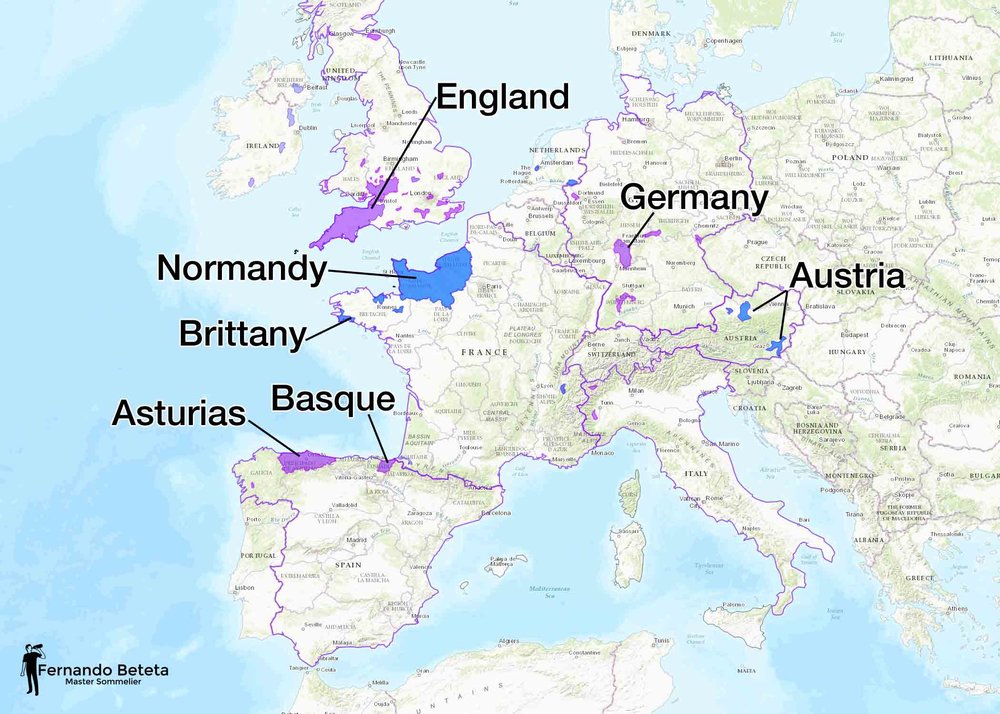
Hard Cider 101
In researching cider, the American Cider Association is a useful resource, including a draft lexicon in pdf form here. What is hard cider, anyway? The following key facts are from the American Cider Association Draft Lexicon
- Cider is produced by fermenting apples with no other added fruit or botanical adjuncts.
- Can range from dry to sweet.
- Can be any combination of tannic, fruit-forward, tart, funky, bitter or sour depending on apple
- variety, yeast and production choices.
- The apple variety and the growing climate may all impact the cider’s characteristics, including the flavor.
- Flavors present are derived solely from the apple varieties used, and possibly through the choice of yeast or other production practices.
- In cider, apples may express a range of flavors such as floral, vanilla, stone-fruit, tropical-fruits, citrus, berries, smoke, and more.
- Typical ABV ranges from 4.5-8.5%
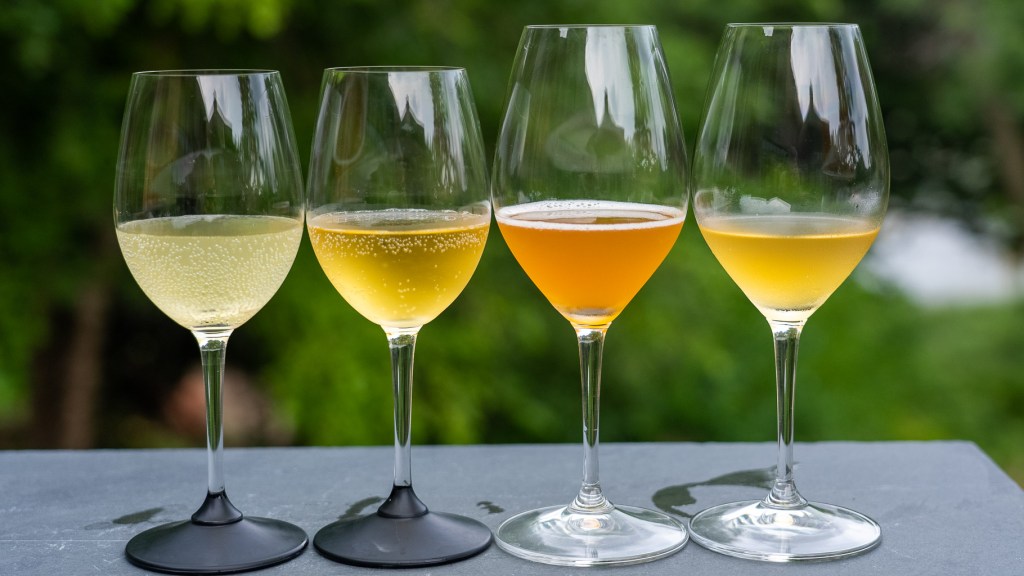
Key Things to Know About Cider
– Drink it fresh. Different from wine, cider doesn’t benefit from long aging
– Ciders range from dry to sweet, a higher percentage of European ciders are dry whereas most American ciders are sweet
– Spelled sidra in Spain, cidre in Normandy and Brittany, cider in the US
– Ciders are made in both still and sparkling, and within sparkling, both force carbonated and naturally carbonated
– If pears are the source it’s Perry, not cider. If you add other fruits such as berries, it’s fruit cider.
Cider Tasting Notes
While not in broad use yet, the American Cider Association has a suggested standard tasting method for cider. We’ll use this list for our notes below.
Acidity: Low, Medium or High?
Carbonation: Still, Effervescent (Pétillant), Sparkling
Body: Low, Medium or High?
Tastes Like(sweetness): Dry, Semi-dry, Semi-sweet, or Sweet?
Tannin:Low, Medium or High?
Flavor notes:
Disclosure: With the exception of the Keepsake Cider from Minnesota, the ciders for this post were provided as samples. No other compensation was involved, all opinions expressed are mine.
Spanish Ciders
As shown on the map above, sidra from Spain typically comes from Asturias, a region on the north Atlantic coast. It’s much cooler there, too cold for grapes but good for apples.
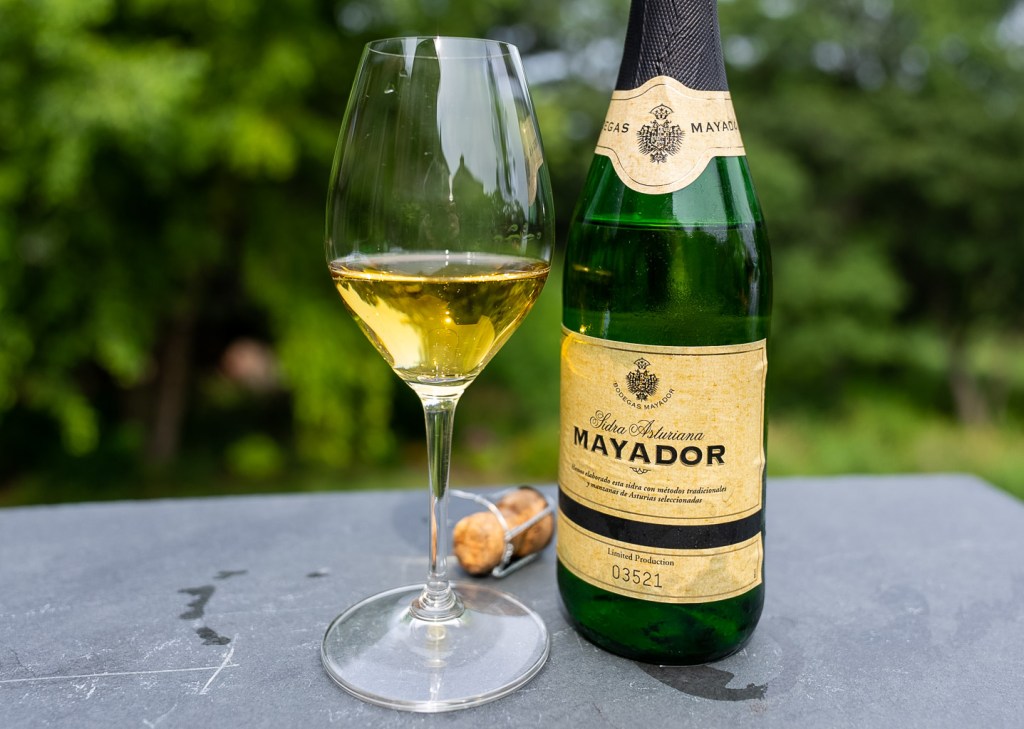
Bodegas Mayador Espumante Semi-Dry (sample, $10 SRP) 5% abv
Acidity: High
Carbonation: Sparkling
Body: Medium
Tastes Like: Semi-dry
Tannin: Low
Flavor notes: Ripe, slightly bruised apples, sour apples, apricots, savory spices, toasted oats, cedar.
Observations: Very enjoyable cider with nice effervescence and acidity balancing the sweetness.

Bodegas Mayador Natural Dry (sample, $7 SRP) 6% abv
Acidity: High
Carbonation: Still
Body: Low
Tastes Like: Dry
Tannin:Low
Flavor notes: Very dry and quite sour. Citrus, limes, lime peel, straw, sour apples.
Observations: This one was not my favorite, but it would likely appeal to a sour beer drinker.
French Ciders – Typically Normandie and Bretagne
Knowing how widely grapes are grown in France, it seems natural to look north to the regions too cold for grapes. Normandie and Bretagne, voila! Note this also where the best butters come from!
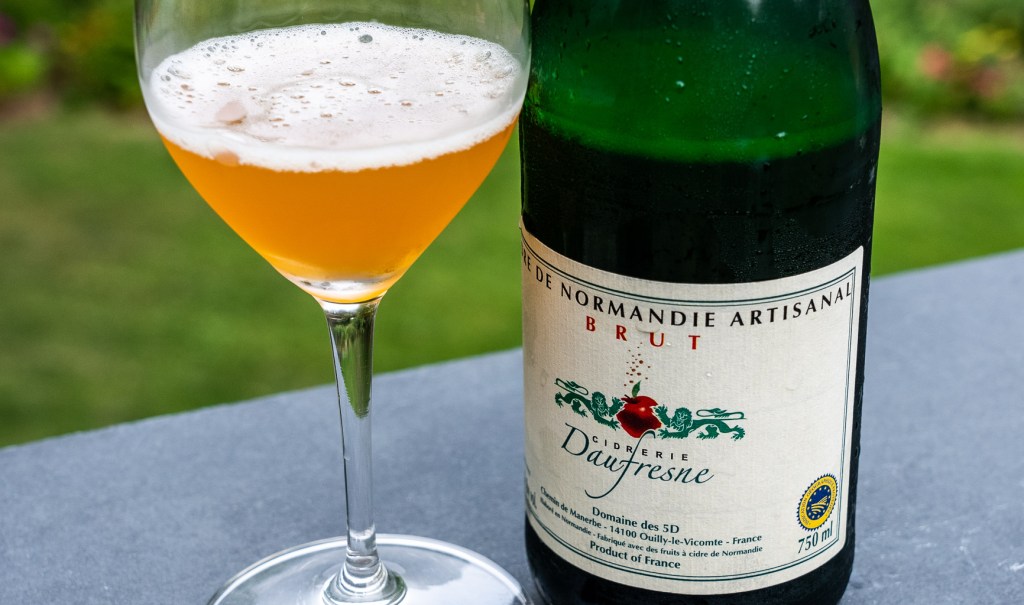
Cidrerie Daufresne Artisanal Brut (sample, $10 SRP) 5% abv
Acidity: High
Carbonation: Sparkling
Body: Full
Tastes Like: Semi-dry
Tannin: Medium
Flavor notes: Bruised apples, apple skins, amontillado sherry (this note receded after day 1), caramel, cinnamon, a bit of earth
Observations: I liked this cider much more on day 2, as the acetaldehyde (sherry) notes receded. The cidre has a nice balance of sweetness and acidity combined with a light sparkle.
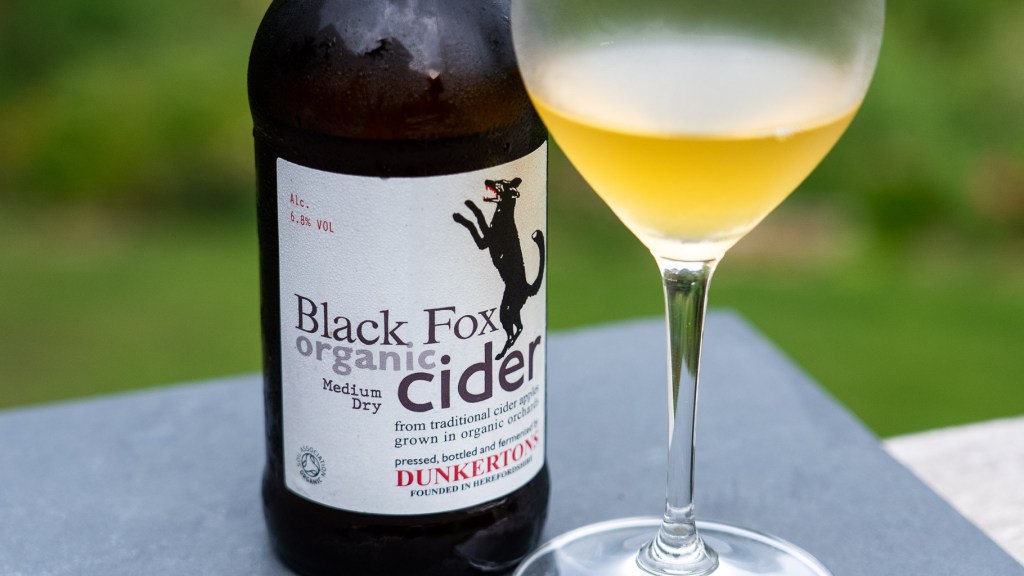
English Ciders
Until recently, England’s climate was too cold and wet for wine grapes. Even with global warming, more of the country is suitable for apples!
Dunkerton’s Black Fox Organic Medium Dry Cider (sample, $8 SRP 500ml bottle) 6.8% abv
Acidity: High
Carbonation: Effervescent (Pétillant)
Body: Medium
Tastes Like: Semi-dry
Tannin:Low, Medium
Flavor notes: Earthy, ripe bruised apples, apricots, peaches.
Observations: This cider was my personal favorite of the bunch. Perfect balance of sweetness, acidity, light effervescence with nice complexity of flavors.

Minnesota Ciders
I originally became interested in cider because Minnesota is a such an apple powerhouse. Our University of Minnesota Agriculture Department is a longtime breeder of new apple varieties like Haralson, Honeycrisp, Zestar, Sweetango and more. As it turns out, these are considered sweet dessert apples and not very good for cider! We still have a growing cider community here and more old heritage varieties are being planted. Of course, we have a much better apple climate than traditional wine grapes!
Keepsake Wild Dry Cider ($12 locally) 6.7% abv
Acidity: Medium
Carbonation: Effervescent (Pétillant)
Body: Low
Tastes Like: Dry
Tannin:Medium
Flavor notes: Lemon, lemon rind, underripe yellow apple, honeysuckle.
Observations: This cider was very nice, but I came to understand the value of a bit of sweetness while trying the wide variety of ciders we had for our July World Wine Travel group. Keepsake makes more ciders, so I’ll definitely be trying more.


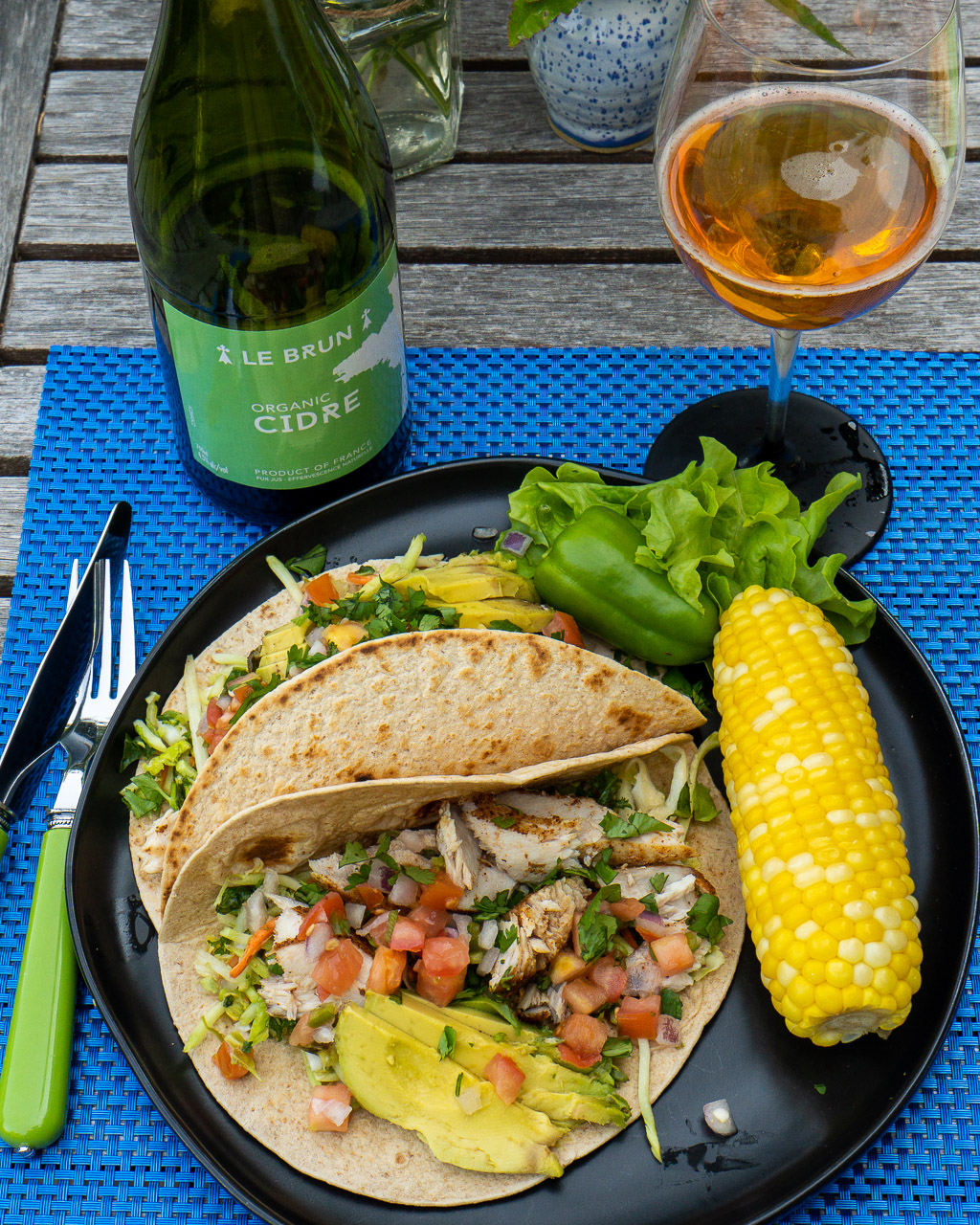
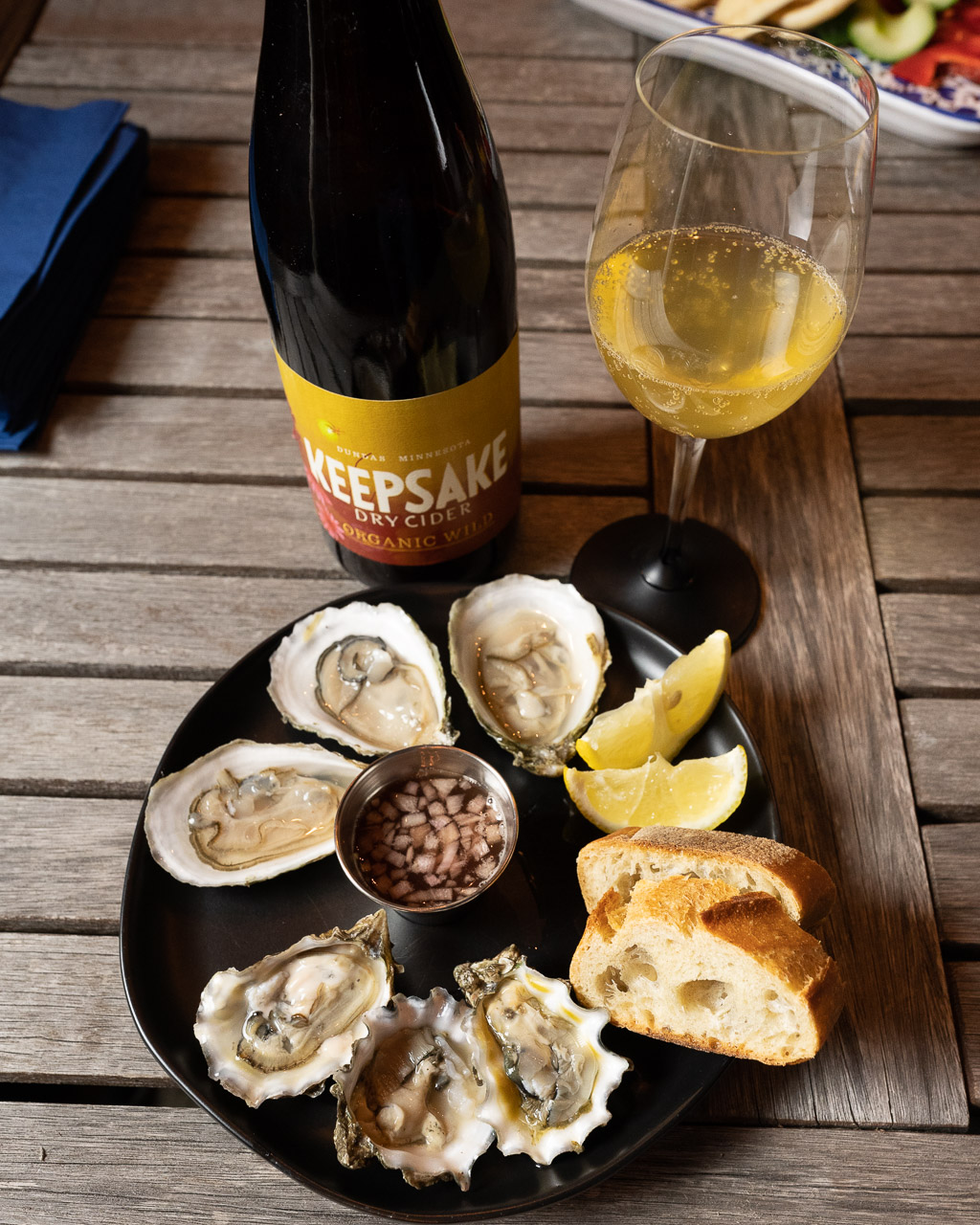
Pairing Ciders with Food
Pairing foods with cider is so different from wine, I’ve resorted to just trying the cider with whatever we’re eating that day. Spicy food with a semi-dry or semi-sweet cider seems like a natural. Fruit based sauces also seem like a good choice. I haven’t had any plain misses, but I also haven’t found a Wow example yet. Need to keep trying!
Cider Explorations from the World Wine Travel Writers
Take a look below at all the great cider ideas, then join our chat! We meet on Saturday July 24 from 10-11am CDT at the #WorldWineTravel hashtag on Twitter. We’d love to hear your thoughts on cider!
- A BBQ Party Featuring Spanish, French and British Hard Ciders by Chinese Food & Wine Pairings
- A Crash Course in Hard Ciders by Somm’s Table
- Anna’s Ciders and Pier City Cider in Ventura County by Wine Predator … Gwendolyn Alley
- Bodegas Mayador – A Taste of Asturias Cider by ENOFYLZ Wine Blog
- Cider Glazed Rotisserie Chicken and a Sampling of Hard Ciders by A Day in the Life on the Farm
- Divide and Cider: Conquering Spanish Sidra with Mire by Asian Test Kitchen
- Falling In Love With Cider by Avvinare
- I am Cider Curious by Food Wine Click!
- One Glass, Many Ciders by Children of the Grape
- Pollo Con Ajoy y Limon and Spanish Hard Ciders by Our Good Life
- Put This Basque Beverage on Your Drink List! by Savor the Harvest
- Sidra from Asturias in Northern Spain – Its Culture and Traditions by Crushed Grape Chronicles
- Traditional Spanish Sidra, a Tipsy Trickster, & Tanuki Cider by Culinary Adventures with Camilla

Comments
8 Responses to “I am Cider Curious #WorldWineTravel”Trackbacks
Check out what others are saying...-
[…] I am Cider Curious by Food Wine Click! […]
-
[…] I am Cider Curious by Food Wine Click! […]






I haven’t yet sampled the cider from France but of the other 3, the Black Fox was my favorite as well.
Great hard cider 101 Jeff! I also stumbled upon the Am Cider Assoc. As you say, great resource. I thought about an oyster pairing yet ended up with something else. Curious how was that with the Keepsake?
I love that you added in a local-to-you cider. I did the same…and learned a whole lot about the Japanese trickster, the Tanuki. Thanks for joining the fun and games this month.
What fascinating research you found on the American Cider Association! I love that you found their guide to tasting notes. I wish I would have had that when I tasted my first two from Asturias! At least I have it for the remaining cidre from Normandy and England. Such great information!
A great overview of cider Jeff! I’m looking forward to try the ciders from France and the UK!
I want to try that Black Fox! Also thank you for the format for tasting and taking notes on ciders; very useful!